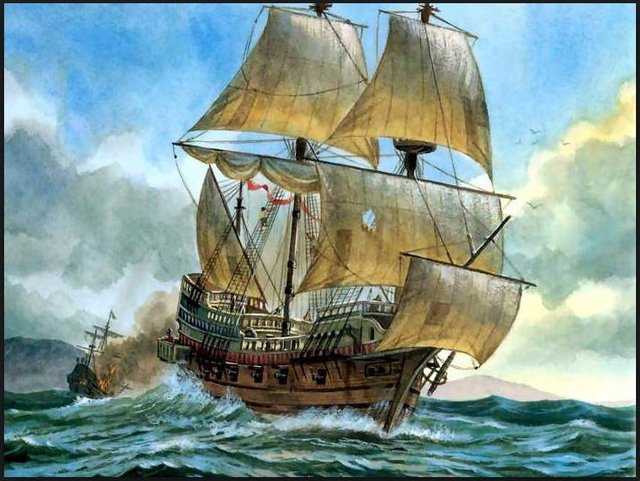TODAY in HISTORY (26 September): Francis Drake completed his circumnavigation of the globe in 1580
On 26 September 1580, Francis Drake entered Plymouth harbour on the Golden Hind with 59 remaining crew members aboard.
They also carried with them spices and captured Spanish treasures. The Queen's half-share of the cargo was enough to cover the crowns expenses for an entire year.
Even if Drake was the first Englishman to circumnavigate the Earth he stood second to Elcano's voyage in 1520.
Drake's life at sea begins at the age of 23 when he accompanied his second cousin, Sir John Hawkins on a journey to the Americas. On their second trip together in 1568, they were trapped by the Spaniards in the Mexican port of San Juan de Ulúa.
He escaped along with Hawkins, but Drake vowed revenge on the Spaniards.

In 1572, Drake embarked on his first major independent enterprise. He attacked and raided the Isthmus of Panama which interrupted the Spanish treasure ships. After the raid, Drake stayed in the Caribbean for almost a year, attacking and capturing Spanish shipping and their shipments.
The Spaniards soon saw him as a pirated which they called El Draque.
Drake's success in the Caribbean caught the attention of Queen Elizabeth 1 who sent him on an expedition in 1577.
The purpose of the expedition was to capture Spanish treasure ships and raid Spanish settlements along the Pacific coast of the Americas.
He set sail on 13 December 1577, aboard the Pelican and four other ships with 164 men. Near the Cape Verde Island, he captured a Portuguese merchant ship which he added to his convoy. The captain of the ship was a man with considerable knowledge of navigating in South American waters.
On the Atlantic crossing, Drake had to destroy both the Christopher and the Swan due to loss of men. He eventually made landfall at the bay of San Julian, in what is now Argentina. After a period of recovery, Drake's Pelican and two remaining ships departed for the Magellan Strait at the southern tip of South America. In September 1578 Drake entered the Pacific ocean, but due to violent storms he lost one of his ships and caused another to return to England. Thus leaving him only with the Pelican.
He renamed the Pelican to the Golden Hind sailed north along the Pacific coast of South America. He attacked Spanish ships, ports and pillaging towns. Near Lima, Drake captured a Spanish ship laden with Peruvian gold.
He also learned about another treasure ship which was sailing west towards Manila. Drake gave chase and eventually captured the treasure ship, which proved his most successful raid.
He reached the coast of California on 17 June 1579 and found a good port for repair works. He claimed the land for the English Crown and called it Nova Albion — Latin for "New Britain". Today the officially recognised location of Drake's New Albion is Drakes Bay, California.
Drake left the Californian coast used the south-west winds to carry his ship across the Pacific Ocean. A few months later he reached the Moluccas, a group of islands in the western Pacific, which is today part of modern-day eastern Indonesia, where the Golden Hind was caught on a reef on 9 January 1580. The next day they succeed to freed the ship and to continue with the voyage. On route towards the tip of Africa, he made multiple stops and eventually rounded the Cape of Good Hope to reached Sierra Leone by 22 July 1580.
On 26 September 1580, the Golden Hind sailed into Plymouth. To honour, Drake Queen Elizabeth 1 awarded him a knighthood.
He purchased Buckland Abbey, a large manor house near Yelverton in Devon and he lived there for fifteen years, until his final voyage. The manor remained in his family for several generations.
Sources:
https://memory.loc.gov/intldl/drakehtml/rbdktime.html
https://www.loc.gov/rr/rarebook/catalog/drake/drake-4-famousvoy.html
https://en.wikipedia.org/wiki/Francis_Drake
http://www.history.com/topics/exploration/francis-drake